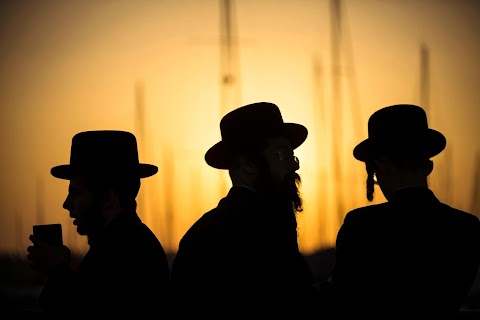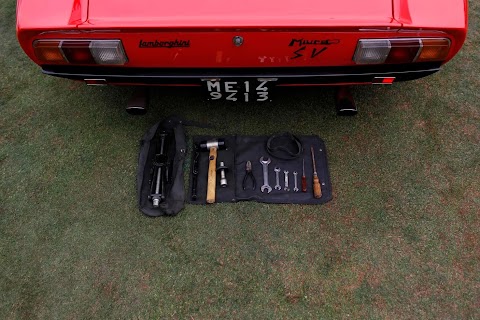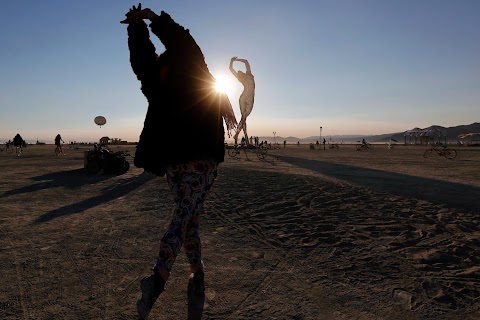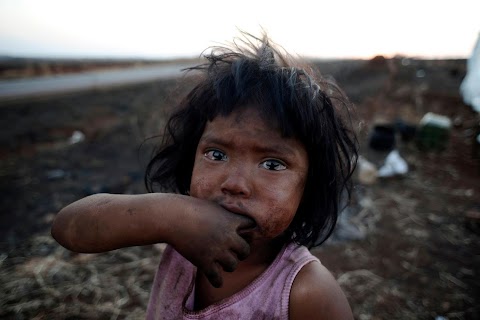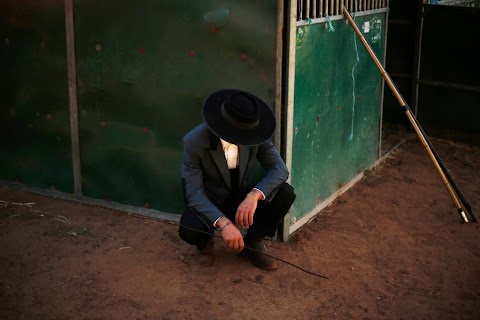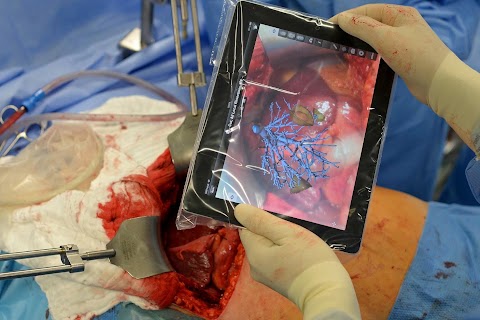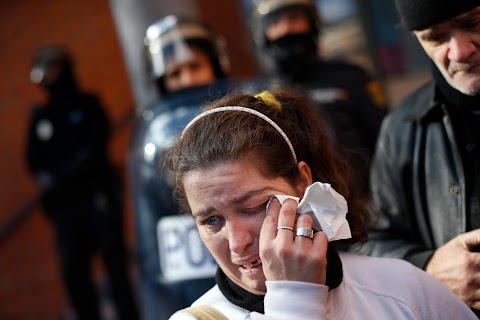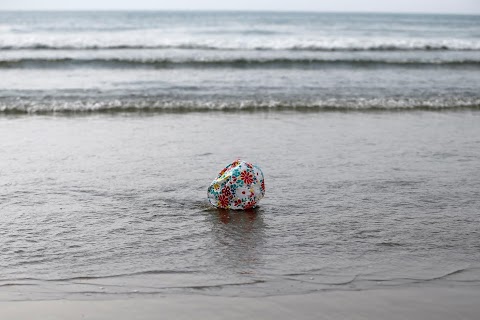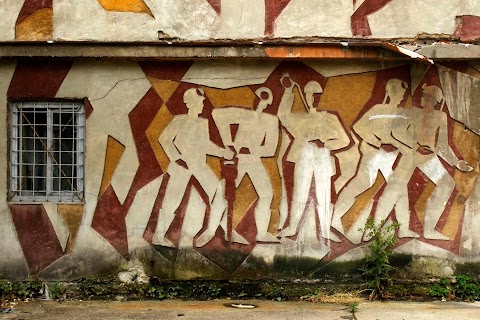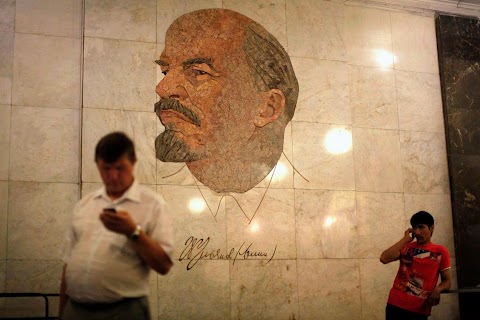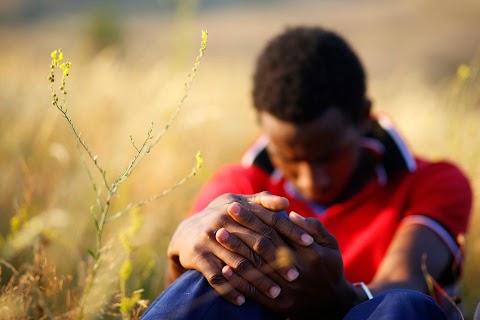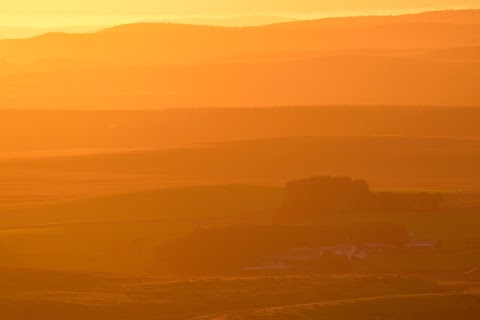
Modern times on an ancient border
Golden light floods the hills rolling towards the English-Scottish border from the ancient boundary of Hadrian's Wall. Built by the Romans to separate their province of Britannia from tribes to the north, the wall is one of many signs of old division that score the border landscape.
Yet despite this history of conflict, with a vote on Scottish independence due next year, enthusiasm among borderers for any more formal division is hard to find.
Story
In Scotland's Borderland, Enthusiasm For Independence Elusive
The old battlefields where Englishmen and Scotsmen once shed each other's blood are a reminder of historic enmities in the border region.
But with a year to go before Scotland votes on independence, enthusiasm for a break between the two countries is hard to find in its towns and farming communities.
The 96-mile (154-km) border cuts across mainland Britain from the North Sea to the Irish Sea, through an area that was fought over and the scene of cross-border raids for centuries.
The apparent lack of support for independence, gauged by conversations with borderers, suggests Scots here will not be swayed by old rivalries - something that the "Yes" campaign has tried to capitalise on.
"I think it's introducing one level of uncertainty that we do not require at this time," said Stephen Rendle, managing director of a tweed and cashmere mill in the Scottish Borders town of Hawick.
"Everybody I know feels Scottish enough, the identity of our company is Scottish enough, it's not going to be enhanced. And we only see it as an additional cost coming."
With just a few percent of Scotland's 5 million population, opinion here is not necessarily a barometer for the rest of the country. But polls show the Scottish National Party's (SNP) push for independence, something opposed by the British government and the opposition Labour party, faces an uphill struggle.
A survey this month showed only 25 percent of Scots backed independence, while 47 percent opposed. However, with just a year to go before the September 18, 2014, referendum, enough voters are "don't knows" to swing the vote.
The SNP, which runs Scotland's devolved government, says full independence will boost democracy and allow Scots to unshackle themselves from what they say is Britain's unrepresentative government.
In the last British general election, Prime Minister David Cameron's ruling Conservative party won only 16.7 percent of the vote. It holds only one of Scotland's 59 parliamentary seats as a result, a state of affairs that prompted jokes that there were more pandas in Scotland than Conservative lawmakers.
But opponents of independence say Scotland would be worse off economically and have far less influence in the world if it went it alone. And if it did break away, both camps agree that Britain's own global clout and the future of its Scotland-based nuclear deterrent would come under pressure too.
INTERTWINED
Along the border, where farming and tourism form the backbone of the economy, locals lead lives that straddle both countries. They do not welcome the prospect of formal division.
"I live in England, I work in Scotland. Where's my taxes going?" asked Paul Goodwin, landlord of "The First and Last" pub located just inside Scotland and decked out with Scottish flags, even though Goodwin himself is English.
Across the border in England, local historian Clive Hallam-Baker flies an English flag outside his house - a gesture he describes as a tongue-in-cheek response to Scots symbols. Yet his day-to-day life is entirely integrated with Scotland.
"Virtually all our services come from across the border. Scottish telephone, Scottish power, Scottish post office, we have a Scottish post code, we bank in Scotland at the Bank of Scotland," he said.
Hallam-Baker is chairman of the Remembering Flodden Project, a small charity dedicated to keeping alive the memory of the 1513 Battle of Flodden, a bloody defeat of the Scottish by the English that took place close to his house.
Events devoted to the battle - whose 500th anniversary was marked on September 9 - bring together people from England and Scotland.
Gerald Tait, secretary of the Flodden 1513 Club, which commemorates the Scots who died in the battle, lives in Coldstream but is originally from northern England.
"Probably two thirds of the club are Scottish-born, but the rest are from over the border. There's very good banter," he said.
The culture of the border area is partially shaped by a long period of turbulence from the 13th to early 17th Century, when the region was lawless and roamed by Reivers, families who would mount cross-border plundering raids.
Towns in the Borders region of southeast Scotland hold annual "Common Ridings" or festivals, when residents ride out on horseback in a tradition dating back to the times when borderers would ride the boundaries of their lands to protect them.
The Ridings are a Scottish affair, but the history of the Reivers helps bind the area together, according to Wayne Lewins, who has run a pub in Coldstream for over a decade, although he is originally from just south of the border.
"The Scottish Reivers went south and did their raping and pillaging, and then the Northumbrian (English) Reivers went north and did their raping and pillaging. They're all related somehow, somewhere along the line."
Paul Wheelhouse, a pro-independence cabinet member of the devolved Scottish government, said the vote in the Borders region is tight, with many still undecided.
Independence could boost strong economic and cultural ties between the north of England and Scotland, he said.
Publician Lewins disagreed.
"Most of the Borders people are quite happy with the way things are. They like the status quo as it is. It works," he said.




























